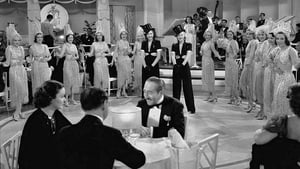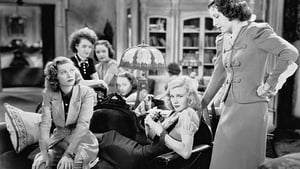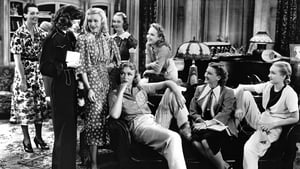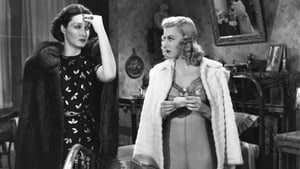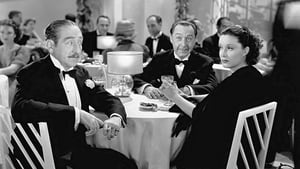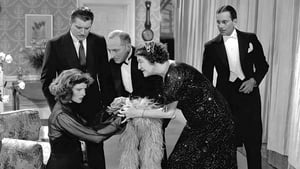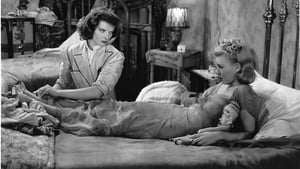Contact: [email protected]
Video Sources 0 Views

Synopsis
[ez-toc]




Introduction
In the vast expanse of classic cinema, where black-and-white frames dictate the nostalgia of a bygone era, a unique revival beckons. “Stage Door Colorized 1937,” a timeless gem from the annals of old films, has undergone a remarkable transformation through the lens of colorization. This article delves into the enchanting world of Stage Door Colorized, exploring its narrative, the stellar cast, the nuances of colorization, and the impact it has on preserving film history.
Read Media File Transfer Agreement: Terms and Conditions
Read FAQ
The Story of Stage Door Colorized
Set against the backdrop of the bustling Broadway theatre scene, “Stage Door Colorized 1937” weaves a captivating tale of dreams, ambitions, and the pursuit of stardom. The plot revolves around Terry Randall, played by the incomparable Katharine Hepburn, a young woman determined to make her mark in the theatrical world. The narrative unfolds in a theatrical boarding house, where aspiring actresses share dreams, heartaches, and the relentless pursuit of success. Terry’s journey becomes a microcosm of the larger struggle within the entertainment industry, making Stage Door a poignant reflection of the era’s societal dynamics.
The Cast and Characters
The brilliance of Stage Door Colorized lies not only in its narrative but also in the exceptional ensemble cast. Katharine Hepburn’s portrayal of Terry Randall is a testament to her acting prowess, capturing the essence of a determined young woman navigating the complexities of a cutthroat industry. Ginger Rogers, Adolphe Menjou, Gail Patrick, and Andrea Leeds contribute stellar performances, each adding a layer of depth to the tapestry of characters. The chemistry among the cast members elevates the film, making Stage Door Colorized a true cinematic gem.
The Success of Stage Door Colorized
Upon its release in 1937, Stage Door Colorized not only resonated with audiences but also emerged as a box office success. The film’s success can be attributed to its engaging storyline and the brilliant dialogue that still echoes through time. Memorable lines like “The calla lilies are in bloom again” have etched themselves into the collective memory of cinema enthusiasts, showcasing the timeless brilliance of Stage Door.
The Colorization Process
Fast forward to the present, and Stage Door Colorized 1937 undergoes a transformative process – colorization. The restoration of this old film involves advanced techniques to infuse natural and vibrant colors into the once-monochromatic frames. The goal is not just to add color but to breathe new life into a classic, allowing contemporary audiences to experience the film in a way that was never thought possible.
Bringing New Life to a Classic Film: Stage Door Colorized 1937 in Color
Colorization is often met with skepticism, especially when applied to beloved black-and-white classics. However, in the case of Stage Door Colorized 1937, the process offers a new perspective on the narrative. Colorization provides a fresh experience, allowing viewers to connect with the characters and settings in a manner that aligns with the original vision of the filmmakers. It bridges the temporal gap, offering a chance to witness the film as it was originally intended.
The Legacy of Stage Door Colorized
Beyond its initial success, Stage Door Colorized left an indelible mark on film history. Adolphe Menjou’s impeccable portrayal, Lucille Ball’s early appearance, Ann Miller’s memorable performance, and the directorial finesse of Gregory La Cava collectively contribute to the enduring legacy of Stage Door. The film serves as a time capsule, preserving the talent of its cast and crew for future generations to appreciate.
Examining Theatrical Elements in Stage Door Colorized 1937 (Colorized)
The theatrical backdrop of Stage Door serves as a mirror to the challenges faced by those pursuing an acting career during the ’30s. The film masterfully captures the essence of the theater industry, with tragic characters and melodramatic roles adding depth to the narrative. The colorization enhances the theatrical realism, allowing audiences to immerse themselves in the struggles and triumphs of the characters.
Movie Review: Stage Door 1937 (Colorized)
As we assess the colorized rendition of Stage Door 1937, the film proves to be a visual feast. The vibrant hues breathe life into the meticulously crafted scenes, enhancing the overall storytelling experience. The cast’s performances, now captured in color, add a layer of nuance to their characters, making the film a captivating journey for both new and seasoned viewers. In this adaptation, the charm of the ’30s film era is not lost but rather accentuated, inviting a new generation to appreciate the cinematic magic of yesteryears.
Preserving Film History: The Role of Colorization
The significance of colorization extends beyond the aesthetic appeal. It plays a crucial role in film preservation, opening avenues for renewed interest in old films. Colorization, when done with respect for the original vision, becomes a bridge between generations, allowing audiences to connect with the past and appreciate the artistry of classic cinema.
The Controversy Surrounding Colorization in Film
However, the debate surrounding colorization persists. Purists argue that altering the black-and-white charm of classics compromises their authenticity. This controversy raises questions about the balance between preserving the original form and adapting films to suit evolving tastes. Yet, in the case of Stage Door 1937, the colorization serves as a creative tool, enhancing rather than detracting from its intrinsic value.
In Defense of Colorization: A Creative Approach to Film Restoration
Advocates for colorization argue that it is a valid and creative approach to film restoration. It opens avenues for a wider audience to engage with classic films, breathing new life into masterpieces that might otherwise fade into obscurity. By embracing colorization, the film industry acknowledges the importance of evolving technologies in preserving the cultural legacy of cinema.
The Future of Colorization Technology
Looking ahead, the future of colorization technology holds promise. Advancements in this field offer the potential for even more nuanced and realistic color representations. The ongoing dialogue between traditionalists and advocates of colorization may lead to a middle ground, where the authenticity of the original film is maintained while enhancing the viewing experience for contemporary audiences.
Conclusion
In conclusion, Stage Door 1937, through the lens of colorization, invites audiences to embrace both the original black-and-white version and its vibrant adaptation. It advocates for a balanced appreciation of film history, recognizing the value of preserving movies in their original forms while acknowledging the artistic possibilities that colorization can bring. As we navigate the evolving landscape of cinema, let us celebrate the enduring charm of Stage Door and other classics, ensuring that the magic of old films continues to captivate generations to come.
